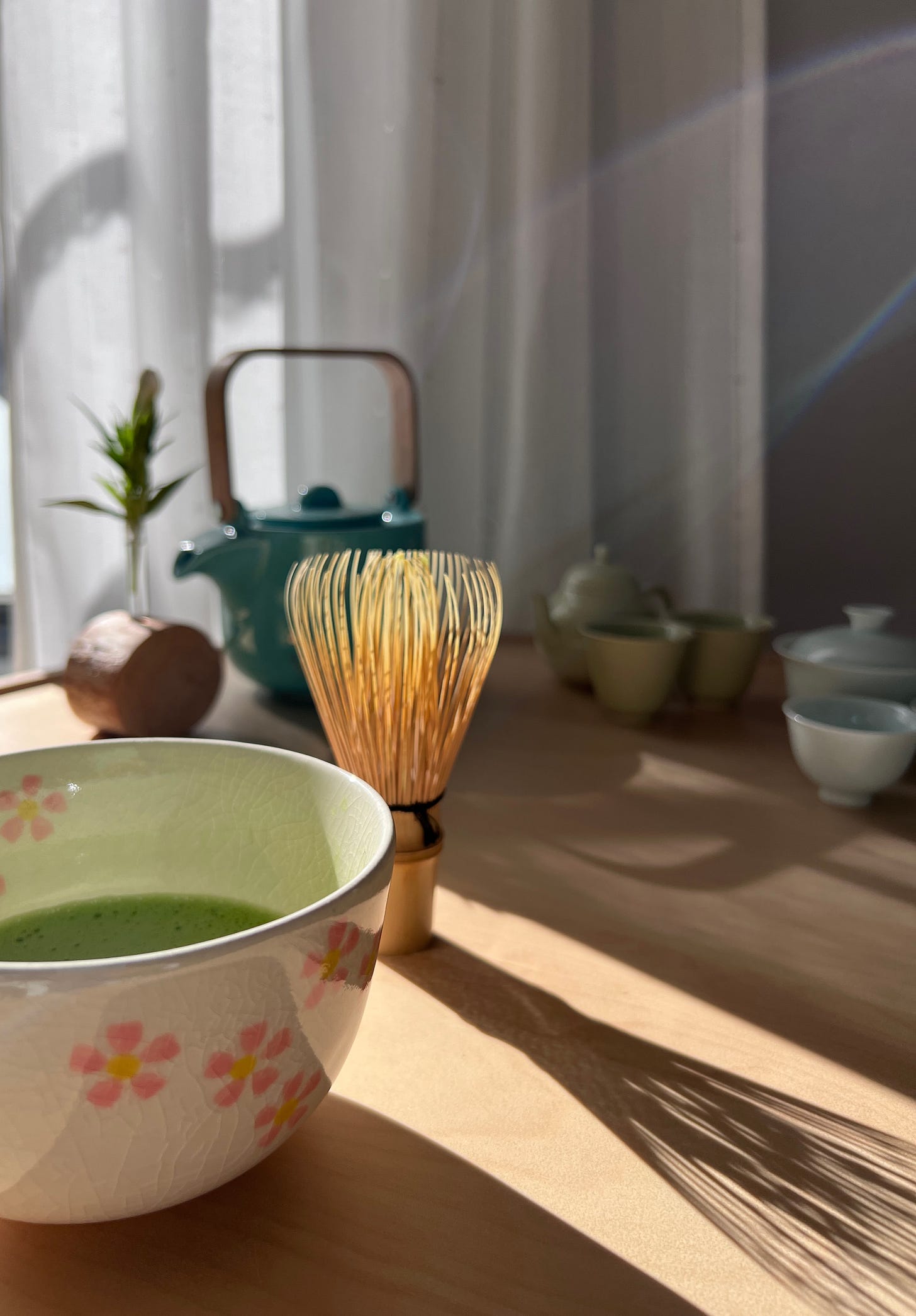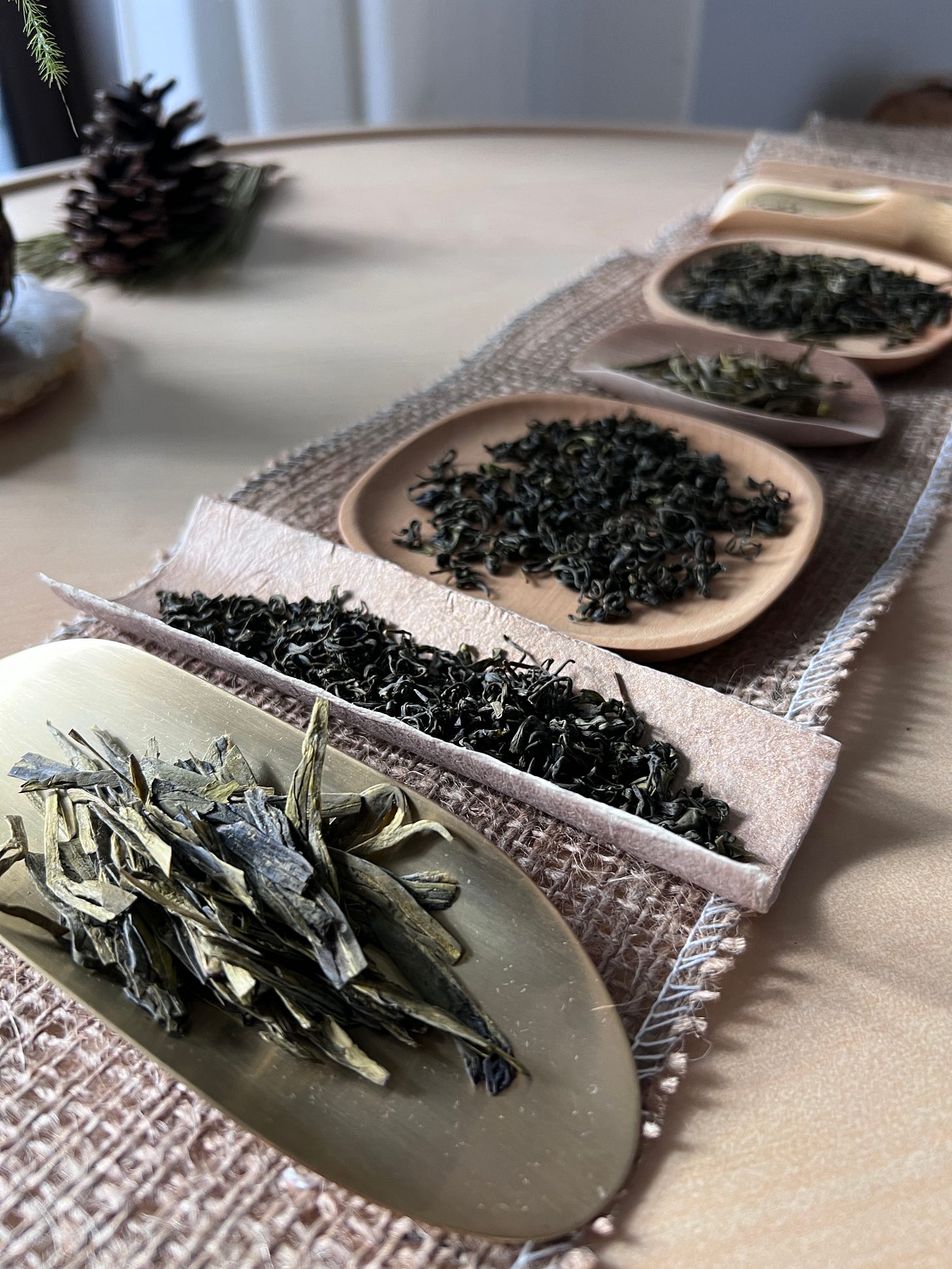Tea — As You Are, As It Is
Accessible and free from judgment. Nothing to fix. Nothing to prove.
Keep those questions coming!
I write this newsletter - 72 Seasons of Tea - from a place of joy. Not for money, not for clicks, but the pure pleasure of putting my wandering thoughts down, stringing them into words, and being able to freely share them with you [This is my 42nd post since last year. All free with an optional paid subscription].
Tea related posts | See all previous posts | Instagram | LinkedIn | About
So it is a real blessing to receive your encouragements, read your feedback, and interact with some of you - through our chats, paid subscribers, and amazing writers recommending my newsletter.
I especially love the questions on tea you send my way. Some of you had reached out privately. Some of you shared your questions openly - from Substack writers for
, Teacup of Dao, to .Thank you! And keep the questions coming. Even if I don’t yet have a ready answer, I am happy to explore with you.
Each message and connection from you meant more to me than you know.
Tea questions that continue to steep in my mind
During my Master’s, I shifted to the international development track.
It was a pull I couldn’t ignore: A desire to work with those most disadvantaged, and a longing to see the world. That opened doors - leading me to roles with UNESCO, UNICEF, and other global organizations advocating for change - change for the environment, change for the youngest among us.
Now, sitting in Kyoto, I find myself wondering how to bring together my past work of helping communities in low- and middle-income countries with what I am now discovering through my journey with tea.
There is a wide range in how tea is priced - whether if it’s for tea leaves, vessels, classes, experiences, or tea ceremonies. There is limitation in how tea can be accessed too. Here are some lingering questions I am exploring but don’t have answers to, yet:
Have artisanal teas and tea ceremonies - along with practices like meditation, yoga, and other wellness trends - evolved into status symbols, signaling a refined lifestyle or certain social standing?
If tea meditation is grounded in mindfulness and practiced as a daily anchor, can it also be accessible to those who are most vulnerable - particularly adults facing challenging situations, with limited time and financial means?
How can tea meditation offer mental space and calm to a broader range of individuals who are struggling, such as parents, single parents, caregivers from nurses to childcare teachers, families in low socioeconomic situations without a social safety net, youths facing depression, and the elderly facing loneliness?
Beauty is often associated with the rich and the well-off, much like manicured gardens only to be found in affluent neighborhoods. How can the beauty of tea be reframed to include everyone else, regardless of their financial standing or material possessions?
We have gained. But we have also lost a lot
There is an overwhelming sense of uncertainty right now.
The unpredictable weather that swings between highs and lows. The stock market yo-yoing with its ups and downs. Our emotions teetering with the awful news of rice shortage (and hefty price increase) in Japan, increasing child abuse cases in the region, and many facing loneliness, depression, deep fractures in their relationships worldwide.
Just recently, my eldest daughter whispered to me, “I’m scared,” as we heard the loud sirens of more than five police cars and a fire brigade racing down the street in Kyoto.
I did not tell her then. But I was flustered too.
In uncertainties, it is important to focus on what we can control.Tea is what you make out of it
Green teas are the earliest teas, predating the discovery of other more complex types of tea processing techniques (e.g. black tea 红茶, oolong tea, Pu'er teas 黑茶) following the abolishment of compressed tea cakes during the reign of Emperor Zhu Yuanzhang in the Ming Dynasty. “Do you want some ‘pedestrian’ tea?” my Japanese husband would sometimes tease as he served me Japanese sencha. He grew up drinking green teas at home, the nostalgic kind brewed thick and strong in handleless Japanese mugs.
And now he sees me making light, delicate, faint-tasting teas with my tiny tea cups.
Artisanal green teas (in the form of tea leaves, rather than tea bags) are different as they are typically brewed lightly, favoring natural flavors with subtlety. Gently brewing them brings out their alluring aroma.
For Chinese green teas → 80 Celcius, 3 grams of tea leaves in a 120 ml small gaiwan (instead of a teapot to avoid over brewing), for 25-30 secs, and it’s possible to brew the same tea leaves for 3-5 times.
But there is more than one way to brew tea
As we dive deeper into a subject, it is easy to fall into judgment. But things are rarely black and white. More often, they exist in vast expanse of shades, emerging when we step back and let complexity speak for itself.
Quick to judge goes against the very essence of learning, which thrives on being open-minded, humble, and curious.Misha Gulko, Founder of Path of Cha, wrote this eloquent reflection recently - More Than One Way to Brew Tea.
He mentioned tea on the go, the efficient Western style of brewing, the grandpa style brewing in a mug, the meditative, and the one that goes beyond meditative where you are just brewing tea without naming things.
Not every cup of tea has to have an amazing, mind-opening taste, and not every tea intake has to be a "tea ceremony" with a Yixing teapot.
In tea circles, it's easy to feel like there is a "right" and a wrong way to have tea.
But tea is what you make out of it. Sometimes, it's a means to an end, not an end in itself, and every means serves its purpose. And what works on a quiet Sunday morning won't always fit into a rushed weekday commute or a loud dinner with friends.
There's a kind of honesty in bagged tea. You're not pretending it's rare or sophisticated. – It's functional. And when you're cold or in a rush, function is what matters.
For some folks who are deep into Gong Fu Cha, drinking bagged tea might feel like a betrayal. But, in my opinion, there's nothing wrong with it.
It doesn't have to be rigid. You don't need to quote ancient poetry or try too hard. But to be fully in the moment with your tea is grounding. Gong Fu Cha creates space for that. It's a way of checking in, not just with the tea, but with yourself.
This kind of (quiet, deep) presence doesn't come quickly, if at all. It's not something you can force. It grows slowly, over time, as your tea practice becomes more regular, more lived-in. And when that happens, even briefly, it doesn't stay confined to the tea table. The quiet seeps into other parts of your life. You start to notice how you go through your day and respond to people and events. The way you walk, talk, or even breathe. You start paying attention, and your outlook shifts. Your behavior softens. Your environment reflects it.
Not many of us get to this state. And that's okay.
Tea as you are. Tea as it is. Free from judgment. Nothing to fix. Nothing to prove. Transformative yet accessible.
Embracing the ebb and flow of life in each sip, allowing the moment to unfold and welcoming change as it comes.
Tea - like everything else in life - is what you make out of it.
Tea related posts | See all previous posts | Instagram | LinkedIn | About






one thing you can add is not only using tea bags, but reusing tea bags (and maybe even reusing tea leaves in general). I have been made to feel guilty for reusing a tea bag but tea leaves can be used for more than once and it tastes fine (at least to me).
Your husband sounds supportive and with a good sense of humour. Give him a hug? ☺️